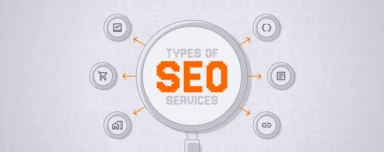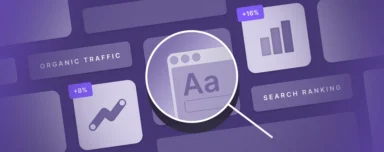The 6 Foundational Components of SEO for Online Visibility
The difference between websites that dominate search results and those that remain invisible isn’t luck; it’s understanding and implementing the core components of search engine optimization that search engines actually reward. Whether you’re starting from scratch or looking to improve an existing strategy, mastering these six essential parts of SEO can help transform your website from a digital afterthought into a visible, traffic-generating asset.
Key Takeaways
- Prioritize core SEO elements – keyword research, on-page optimization, content creation, off-page SEO, technical SEO, and user experience – to enhance website visibility.
- Conduct thorough keyword research to align your content with user intent, ensuring better targeting and improved chances of ranking high in search results.
- Create a holistic SEO strategy that integrates all key components, maximizing your website’s performance and alignment with the needs of qualified users.
The Core Elements of SEO
SEO, or Search Engine Optimization, is a complex practice designed to elevate a site’s presence on search engine platforms. As detailed a field as SEO is, the core elements consist of a handful of critical areas:
- Conducting keyword research
- Refining on-page elements
- Creating valuable content
- Building off-page authority indicators
- Refining technical aspects of the site
- Optimizing for user experience (UX)
Each of these elements plays a vital role in creating a comprehensive SEO strategy that drives organic traffic and improves search visibility. Let’s explore how each component contributes to your overall optimization efforts.

Conducting Keyword Research
Keyword research serves as the foundation for all SEO efforts, identifying the terms and phrases your target audience uses when searching for relevant content. This essential part of SEO involves analyzing search volume, competition levels, and user intent to discover opportunities that align with your business goals.
Why Keyword Research Matters
- Attracts visitors actively searching for your products or services
- Provides direction for creating content that matches user search intent
- Identifies low-competition keywords with high ranking potential
- Ensures SEO efforts target keywords that drive business results
- Helps organize content to avoid competing against your own pages
Essential Keyword Research Tools
Effective keyword research can be conducted using tools like Google Keyword Planner, SEMrush, or Ahrefs. These tools help you analyze search volume and competition, allowing you to identify high-potential keywords. Understanding which keywords are most relevant to your target audience will enable you to create content that aligns with their search behaviors and needs.
Keyword Mapping and Organization
Keyword mapping is another essential aspect of this process. It involves selecting the most appropriate page for each keyword to avoid keyword cannibalization and ensure your content is effectively targeted. Tools like SEMrush or Ahrefs can help you determine which pages are currently ranking and adjust as needed.
Understanding Search Intent
Ultimately, the goal of keyword research is to match your content with the search intent of your audience. By doing so, you can improve your chances of appearing in search engine results and driving organic traffic to your site. As Google’s John Mueller has often emphasized, understanding search intent is key to creating content that meets user needs and performs well in search rankings.

Refining On-Page Elements
On-page SEO optimization involves fine-tuning individual page components to improve search engine understanding and user experience. This crucial piece of SEO includes title tags, meta descriptions, headings (H1, H2, H3), URL structures, and linking strategies that help search engines comprehend your content’s context and relevance.
Why On-Page Optimization Matters
- Helps search engines quickly identify what your page is about
- Optimized title tags and meta descriptions encourage more clicks from search results
- Well-structured content with clear headings improves readability and navigation
- Strategic internal linking distributes authority throughout your website
- Proper formatting increases the chances of appearing in featured snippets
Title Tags and Meta Descriptions
One of the most crucial aspects is optimizing title tags, as they provide search engines with a high-level overview of your page content. Including keywords in your URLs can help search engines understand your page’s content and improve its ranking potential. Meta descriptions are equally important, as they briefly summarize your page’s content and can influence click-through rates from search engine results.
Image Optimization and Alt Text
Image tags are another important element of on-page SEO. They improve website accessibility and help search engines understand the relevance of your images, enhancing both user experience and SEO. Confirm that any employed content management system adheres to recognized on-page SEO practices, including assigning descriptive filenames for visuals alongside suitable alt text explanations, aiding in image comprehension by various search engines.
Internal Linking Strategy
Internal linking is a powerful on-page SEO technique involving linking to other internal website pages using hyperlinks between pages. This helps search engines crawl your site more effectively and understand the relationship between important pages and other pages on your site. Linking to your most important pages ensures they are easily accessible and prioritized by search engines, which can improve their indexing and ranking.
Structured Data Implementation
Structured data markup, such as schema markup, can also enhance your search results by providing additional information that can increase click-through rates. Schema markup is a type of structured data that helps search engines better understand your content and can improve the appearance of your listings with rich snippets.
Creating Valuable Content
Content creation focuses on developing meaningful, relevant information that satisfies user intent and meets search engine quality standards. As one of the most important elements of SEO, valuable content addresses your audience’s questions, provides solutions to their problems, and demonstrates expertise in your field.
Why Content Creation Matters
- Demonstrates expertise and builds trust with both users and search engines
- High-quality content earns links from other websites without active outreach
- Engaging content keeps visitors on your site longer, signaling quality
- Comprehensive content naturally ranks for multiple related search terms
- Valuable content positions your business as an industry thought leader
High-Quality Content Development
At the core of search engine optimization lies content creation. Producing high-quality content that matches user intent is essential for boosting SEO performance. It not only draws in users but also communicates to search engines the value your site provides, which can greatly affect your position in rankings. Well-crafted content can also earn natural links from other websites, which are valuable for SEO and contribute to sustainable growth.
Content Optimization Techniques
In crafting content, it’s vital to incorporate pertinent keywords and utilize distinct headings and subheadings while ensuring readability and scannability. This practice aids both search engines in deciphering your page contents and improves overall user experience on your site. Adding a variety of formats like videos, infographics, and images can heighten engagement and satisfaction among users.
Content Maintenance and Updates
It’s equally important to keep updating and refining existing content to uphold its relevance. This action enhances visibility within search results pages (SERPs). Conducting in-depth content audits helps identify areas for improvement and ensures your material remains competitive. Monitoring engagement metrics such as time spent on-page or bounce rates gives valuable insights into the quality of your material.
Building Off-Page Authority Indicators
Off-page SEO encompasses external strategies that enhance your website’s credibility and reputation beyond your domain. This part of SEO includes acquiring high-quality backlinks from reputable websites, earning brand mentions across the web, and leveraging social media activity to demonstrate trustworthiness.
Why Off-Page SEO Matters
- Quality backlinks signal to search engines that your site is trustworthy and valuable
- Links from other websites drive direct visitors to your content
- Brand mentions and social signals expand your online presence
- Strong off-page signals help you outrank competitors in search results
- External links help search engines discover and index your content faster
Link Building Strategies
Link building is a key off-page SEO tactic focused on acquiring backlinks from other sites and other websites. Google’s John Mueller has reiterated Google’s official stance that “a link is a link” and emphasized the importance of focusing on link quality over quantity to avoid spam and penalties. Establishing backlinks from well-respected, reputable other sites and other websites is especially valuable for improving your website’s authority.
Brand Mentions and Social Signals
Engaging with brand mentions and customer feedback also aids in fortifying your website’s credibility. While their immediate effect on ranking positions can be ambiguous, they foster confidence within your user base and send important signals that Google and other search engines use to evaluate authority. Social media marketing has a knock-on effect by generating discussion around your brand, which may lead to additional backlinks and name-drops.
Off-page-focused SEO includes a variety of SEO tactics beyond just link building, such as brand mentions and social engagement. By concentrating on securing top-tier backlinks along with nurturing relationships with followers via social platforms, you enrich efforts toward successful off-page SEO outcomes.
Refining Technical Aspects of the Site
Technical SEO focuses on optimizing the underlying structure and performance of your website. This comprehensive aspect of SEO encompasses four key categories: crawlability, indexability, site architecture, and performance. These technical elements provide the foundation that allows search engines to efficiently evaluate and rank your website.
Why Technical SEO Matters
- Proper technical setup allows search engines to crawl and index your content
- Fast-loading sites provide better user experience and ranking advantages
- Mobile-optimized sites capture the majority of search traffic effectively
- Proper technical configuration avoids duplicate content and crawl errors
- Strong technical foundation handles increased traffic and content growth
Page Speed and Core Web Vitals
Page speed is a crucial ranking factor for search engines and a key component of a successful SEO strategy. A fast-loading web page not only improves your position in search engine results but also enhances the user experience, leading to higher engagement and conversion rates. Google has acknowledged that page speed serves as a direct ranking factor, citing that over half of users will abandon a mobile site if loading takes longer than one to two seconds.
Core Web Vitals are a set of essential metrics introduced by Google to measure a website’s performance and user experience. These metrics, Largest Contentful Paint (LCP), First Input Delay (FID), and Cumulative Layout Shift (CLS), focus on how quickly your site loads, how responsive it is to user interactions, and how visually stable it remains as content loads.
Mobile Optimization
Mobile friendliness is no longer optional; it’s a necessity for any modern SEO strategy. With the majority of queries now coming from mobile devices, search engines like Google prioritize mobile-friendly websites in their search results. A mobile-friendly website should feature a responsive design that automatically adjusts to fit any screen size, ensuring a seamless user experience whether someone is browsing on a smartphone, tablet, or desktop.
Security and Technical Infrastructure
Adopting HTTPS ensures customer data protection and factors into Google’s ranking criteria. Structured data markup also contributes by enhancing listed information within search outcomes, which may boost click-throughs. A web crawler, the automated bot used by search engines, scans and indexes website content to determine search rankings.
Addressing Duplicate Content Issues
Duplicate content can be a significant obstacle to achieving strong search engine rankings and attracting organic traffic. When identical or very similar content appears on multiple web pages, search engines may struggle to determine which version to show in search results. To tackle duplicate content, it’s important to implement solutions like canonicalization, which tells search engines which version of a page is the preferred one.
Optimizing for User Experience (UX)
User experience optimization creates an intuitive, appealing journey for visitors exploring your site. This vital component of SEO includes improving page loading speeds, ensuring mobile responsiveness, creating clear navigation structures, and designing layouts that facilitate easy content consumption.
Why User Experience Matters
- Better UX keeps visitors engaged and exploring more pages on your site
- Smooth user journeys lead to more desired actions and business outcomes
- Search engines use user behavior signals as ranking factors
- Positive experiences encourage repeat visits and customer retention
- Inclusive design ensures your content reaches the widest possible audience
Site Navigation and Architecture
The organization of website navigation should be straightforward and intuitive, assisting both users and search engine crawlers in locating content efficiently. Creating a logical site hierarchy that makes sense to both users and search engines is essential. Ensure that your most important pages, such as category or pillar pages, are easily accessible from the homepage and are linked to from other pages within your site.
User Engagement Metrics
Ensuring a satisfactory user experience is essential for SEO, as search engines favor websites that facilitate smooth navigation and swift page loads. Data indicates that 88% of consumers are unlikely to return to a website after a poor encounter, potentially increasing bounce rates and diminishing rankings.
Conversion Optimization
Striking harmony between UX design elements with an eye on SEO demands crafting an interface that not only caters well to human visitors but also aligns neatly with search engine requirements. Embedding clear calls-to-action (CTAs) within your site promotes active visitor participation while directing them toward desired actions seamlessly, a practice that boosts engagement metrics known by search engines as indicators of high-quality content.
Implementing a Holistic SEO Strategy
For optimal outcomes, it’s vital to integrate all elements of SEO into a comprehensive approach. Each pillar is critical for enhancing your website’s visibility and driving organic traffic, and understanding how these pieces of SEO work together creates powerful synergy for better search rankings.
Integrating SEO Components
On-page optimization involves refining elements like title tags, content, and internal linking strategies to boost the visibility of webpages on search engines. Elevating the performance of certain pages through links from well-established ones can make a notable difference in their search engine rankings. Google ranks content based on its quality, contextuality with respect to user queries (search intent), and keyword relevance, among other factors.
SEO Tools and Measurement
Utilizing tools such as Google Keyword Planner, Ahrefs, and SEMrush enables you to identify potent keywords while also gauging your overall page SEO effectiveness. By weaving these various aspects into one consolidated strategy for page SEO improvement, you create more powerful synergy, which fosters better positioning in searches, resulting in amplified organic visits.
Understanding Search Engine Algorithms
Understanding how search engines work is fundamental to building a successful SEO strategy. Search engines like Google, Bing, and Yahoo use sophisticated algorithms to crawl, index, and rank web pages in response to user queries. The process begins when search engines crawl websites using web crawlers, or spiders, which systematically browse the web to discover new and updated content.
A few actionable SEO tips: regularly update your content, optimize images with descriptive alt text, and ensure your site loads quickly to support your holistic strategy. Overall, this integrated tactic serves to amplify online presence via robust improvements across different aspects governing modern-day SERP standings, leading to enhanced audience reach organically driven by smart strategic planning around key focus areas.
Advanced SEO Considerations
Beyond the core components of SEO, several advanced strategies can further enhance your website’s performance and visibility in search results. These specialized areas require additional attention but can provide significant competitive advantages.
Local SEO and Building Your Online Presence
Local SEO is essential for businesses that want to attract customers in a specific geographic area. By optimizing your website for local search queries, you can increase your visibility in local search results and connect with potential customers nearby. Start by creating and verifying your Google My Business listing, which helps your business appear in Google Maps and local search results.
Building high-quality local citations, mentions of your business on other reputable websites, can further boost your local SEO efforts. Engage with your community by creating content tailored to local interests, such as blog posts about local events, customer reviews, and social media updates.
Measuring SEO Success
Tracking and measuring SEO success is essential for refining your strategy and achieving long-term growth. Key performance indicators (KPIs) such as organic traffic, search engine rankings, and conversion rates provide valuable insights into how well your SEO efforts are performing. Tools like Google Analytics and Google Search Console allow you to monitor website traffic, analyze queries, and understand user behavior on your site.
In addition to Google’s tools, platforms like Ahrefs, SEMrush, and Moz offer advanced analytics and tracking features, helping you keep a close eye on your SEO performance. By regularly reviewing these metrics, you can identify which strategies are working and make data-driven decisions to enhance your website’s visibility.
Common SEO Mistakes to Avoid
Avoiding common SEO mistakes is crucial for building a solid foundation and ensuring the long-term success of your SEO strategy. One frequent error is keyword stuffing, overusing keywords in an attempt to manipulate search rankings, which can actually harm your site’s visibility. Duplicate content is another pitfall, as it confuses search engines and can dilute your ranking power across multiple web pages.
Neglecting technical SEO aspects such as site architecture, cross-linking of internal pages, and structured data markup can make it difficult for search engines to properly crawl and index your pages. Slow page speed and poor mobile friendliness not only frustrate users but also negatively impact your rankings.
Staying Up-to-Date with SEO Trends
The world of SEO is always evolving, with new trends, technologies, and algorithm updates shaping the way websites are ranked in search results. Staying up-to-date with the latest SEO trends is vital for maintaining a competitive edge and ensuring your SEO strategy remains effective.
Follow industry leaders, attend SEO conferences, and regularly read reputable SEO blogs to keep informed about changes such as updates to Google’s ranking factors, including Core Web Vitals. Emerging trends like voice search optimization, artificial intelligence in search, and evolving user behaviors can all impact how your website performs in search engines.
Summary
While the SEO world buzzes with excitement over the latest AI tools and cutting-edge tactics, the reality is surprisingly straightforward: websites that consistently rank well master the fundamentals first. The six components of SEO outlined in this guide aren’t glamorous or revolutionary; they’re the proven foundation that separates thriving websites from digital ghost towns. Whether you do it yourself or work with industry pros, consistently executing these core elements of SEO will quietly build the sustainable, long-term visibility that actually moves the needle for your business.

Frequently Asked Questions
What are the main components of SEO?
The main components of SEO include keyword research, content creation, on-page optimization, off-page SEO (link building), technical SEO, and user experience optimization. These six core elements work together to improve your website’s visibility in search engine results.
What are the 4 pillars of SEO?
The 4 pillars of SEO are on-page SEO, off-page SEO, technical SEO, and content creation. These fundamental components of SEO work together to improve your website’s search engine visibility and ranking potential.
What are the 3 C’s of SEO?
The 3 C’s of SEO are Content, Code, and Credibility, representing the essential elements for search engine success. These three components of SEO work synergistically to create websites that rank well and satisfy both users and search engines.
What are the 4 steps of SEO?
The 4 steps of SEO are keyword research, on-page optimization, content creation, and off-page promotion. Following these steps ensures you systematically address all core elements of SEO for maximum search engine performance.
How does content creation impact SEO?
Creating high-quality content that matches what users are searching for is crucial for boosting your SEO and improving user experience. Content serves as the backbone for all other parts of SEO, providing substance for search engines to index and users to engage with.
Why is off-page SEO important?
Off-page SEO is essential as it significantly boosts your website’s authority and credibility through quality backlinks from trusted sites. This aspect of SEO signals to search engines that your content is valuable and trustworthy, improving your search rankings and attracting more visitors.
How does user experience affect SEO?
A favorable user experience has a considerable effect on SEO as it increases engagement and lowers bounce rates, which in turn improves your website’s rankings. UX is now considered one of the critical elements of SEO that directly impacts how search engines evaluate and rank websites.






